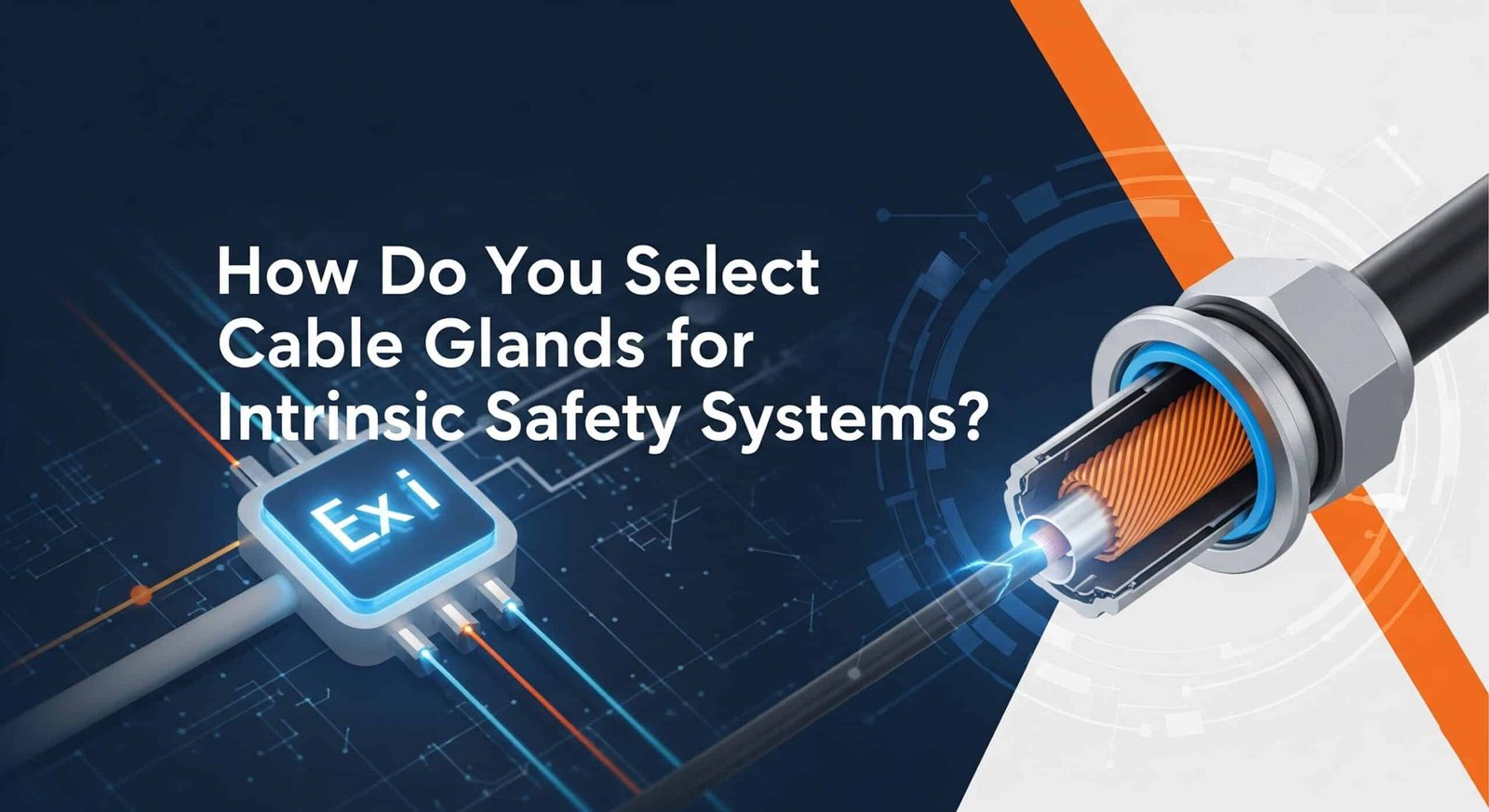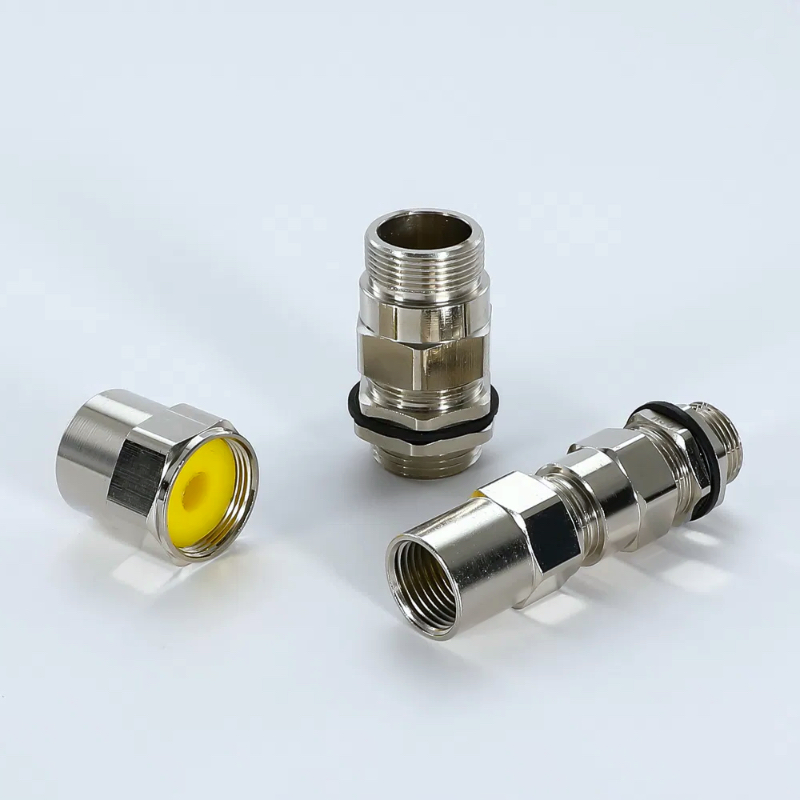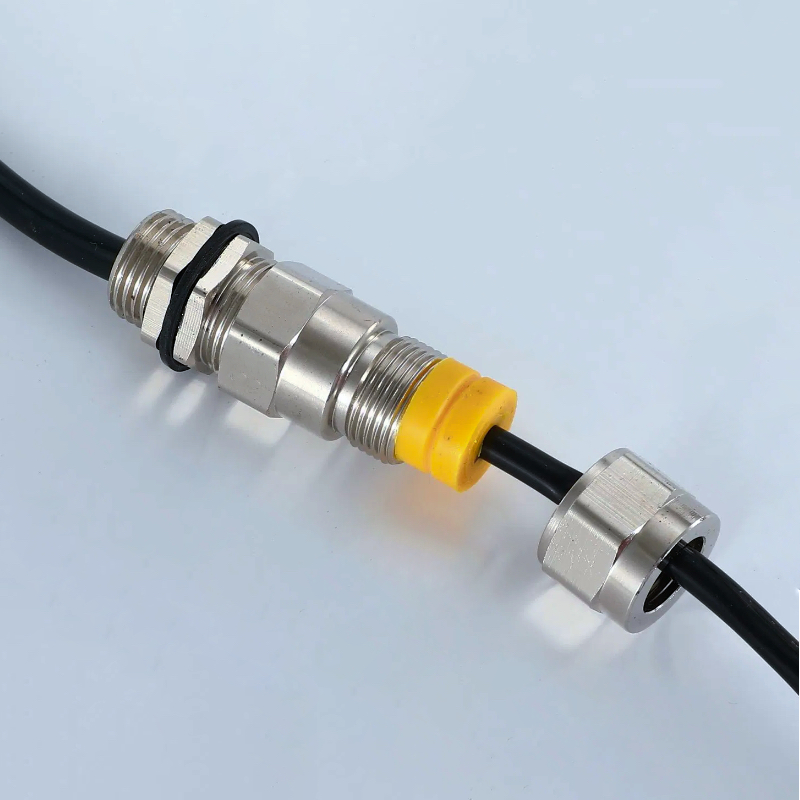Intrinsic safety systems protect lives and facilities in explosive atmospheres, yet many installations fail catastrophically because engineers select standard cable glands that compromise IS circuit integrity, create ground loops, or exceed energy parameters that can ignite explosive gases and cause devastating explosions. Traditional cable glands designed for general industrial use often lack the specialized features required for IS applications, including proper galvanic isolation, low-capacitance construction, and certified energy parameters that maintain safety barriers.
Garniturile de cablu pentru sistemele de siguranță intrinsecă trebuie să mențină izolarea galvanică, să ofere parametri certificați de capacitate și inductanță reduse, să asigure punerea la pământ corespunzătoare și să dețină certificările IS corespunzătoare pentru a păstra integritatea barierei de siguranță și a preveni sursele de aprindere în atmosfere explozive. These specialized requirements demand careful selection based on IS circuit parameters, hazardous area classifications, and safety barrier specifications to ensure personnel safety and regulatory compliance.
Having worked with safety engineers, instrumentation specialists, and facility managers across petrochemical plants in Texas, offshore platforms in the North Sea, and chemical facilities throughout the Middle East, I’ve learned that proper IS cable gland selection is literally a matter of life and death. Let me share the critical knowledge for selecting cable glands that maintain intrinsic safety integrity.
Tabla de conținut
- What Are Intrinsic Safety Principles and Requirements?
- How Do Cable Glands Affect IS Circuit Integrity?
- What Certifications and Standards Apply to IS Cable Glands?
- How Do You Select IS Cable Glands for Different Applications?
- What Are the Installation and Maintenance Requirements?
- FAQs About Intrinsic Safety Cable Glands
What Are Intrinsic Safety Principles and Requirements?
Siguranță intrinsecă1 principles limit electrical energy in hazardous area circuits to levels incapable of ignition through energy limitation, galvanic isolation, and fault protection, requiring specialized cable glands that maintain these safety barriers without introducing additional capacitance, inductance, or leakage paths.
Understanding IS principles is essential because any component that compromises energy limitation or isolation can create ignition sources that defeat the entire safety system.
Energy Limitation Fundamentals
Voltage Limitation: IS systems limit maximum voltage to prevent spark ignition, typically 28V DC for most applications, requiring cable glands that don’t create voltage drops or isolation breakdown.
Current Limitation: Maximum current restrictions prevent heating effects that could ignite explosive atmospheres, with cable glands required to maintain low-resistance paths without creating current concentration points.
Power Limitation: Total power dissipation limits prevent ignition through heating, requiring cable glands with low-loss characteristics that don’t add significant power consumption to IS circuits.
Energy Storage Limitation: Capacitive and inductive energy storage limits prevent ignition from stored energy discharge, making cable gland electrical parameters critical for system safety calculations.
Galvanic Isolation Requirements
Earth Isolation: IS circuits must maintain proper isolation from earth ground, requiring cable glands with insulated mounting or specific earthing arrangements that don’t compromise safety barriers.
Circuit Separation: Different IS circuits require isolation from each other, demanding cable glands that prevent cross-coupling or interference between separate safety systems.
Barrier Integrity: Safety barriers in safe areas must maintain isolation from hazardous area circuits, requiring cable glands that preserve this critical separation throughout the installation.
Protecție împotriva defecțiunilor: IS systems must remain safe under single or multiple fault conditions, requiring cable glands designed to maintain safety even with component failures or damage.
Clasificarea zonelor periculoase
Zone 0/1/2 Requirements: Different hazardous area zones have varying IS equipment requirements, with cable glands needing appropriate certifications for continuous, intermittent, or abnormal explosive atmosphere presence.
Gas Group Classifications: Different explosive gases (IIA, IIB, IIC) have varying ignition energies, requiring cable glands with appropriate energy parameters and construction materials for specific gas hazards.
Temperature Classifications: Equipment temperature limits (T1-T6) restrict maximum surface temperatures, requiring cable glands with appropriate temperature ratings and heat dissipation characteristics.
Dust Environments: Zone 20/21/22 dust hazard areas require cable glands with appropriate dust ingress protection and surface temperature limitations for combustible dust applications.
Ahmed, a safety engineer at a major petrochemical complex in Saudi Arabia, discovered the critical importance of proper IS cable gland selection during a facility expansion. His team initially specified standard brass cable glands for new pressure transmitter installations, not realizing these would compromise the galvanic isolation2 of their IS circuits. During pre-commissioning safety reviews, we identified that the metallic cable glands created earth ground paths that violated IS principles and could potentially create ignition sources. We replaced them with certified IS cable glands featuring proper isolation barriers and low-capacitance construction, ensuring the safety systems met both local regulations and international IS standards. 😊
How Do Cable Glands Affect IS Circuit Integrity?
Cable glands affect IS circuit integrity through electrical parameters including capacitance, inductance, and leakage resistance that must be included in safety barrier calculations, while also providing proper earthing arrangements and isolation barriers that maintain system safety margins.
Understanding these electrical effects is crucial because cable glands can significantly impact IS circuit parameters and safety calculations.
Electrical Parameter Considerations
Capacitance Effects: Cable glands add capacitance to IS circuits that must be included in safety barrier calculations to ensure total circuit capacitance remains within safe limits for the specific hazardous area classification.
Inductance Impact: Inductive components in cable glands can affect IS circuit behavior and energy storage calculations, particularly important for circuits with inductive loads or long cable runs.
Leakage Resistance: Insulation resistance between conductors and earth through cable glands affects safety barrier performance and must meet minimum values specified in IS standards and safety calculations.
Earth Loop Prevention: Improper cable gland earthing can create ground loops that compromise IS circuit integrity and introduce noise or safety hazards into sensitive instrumentation systems.
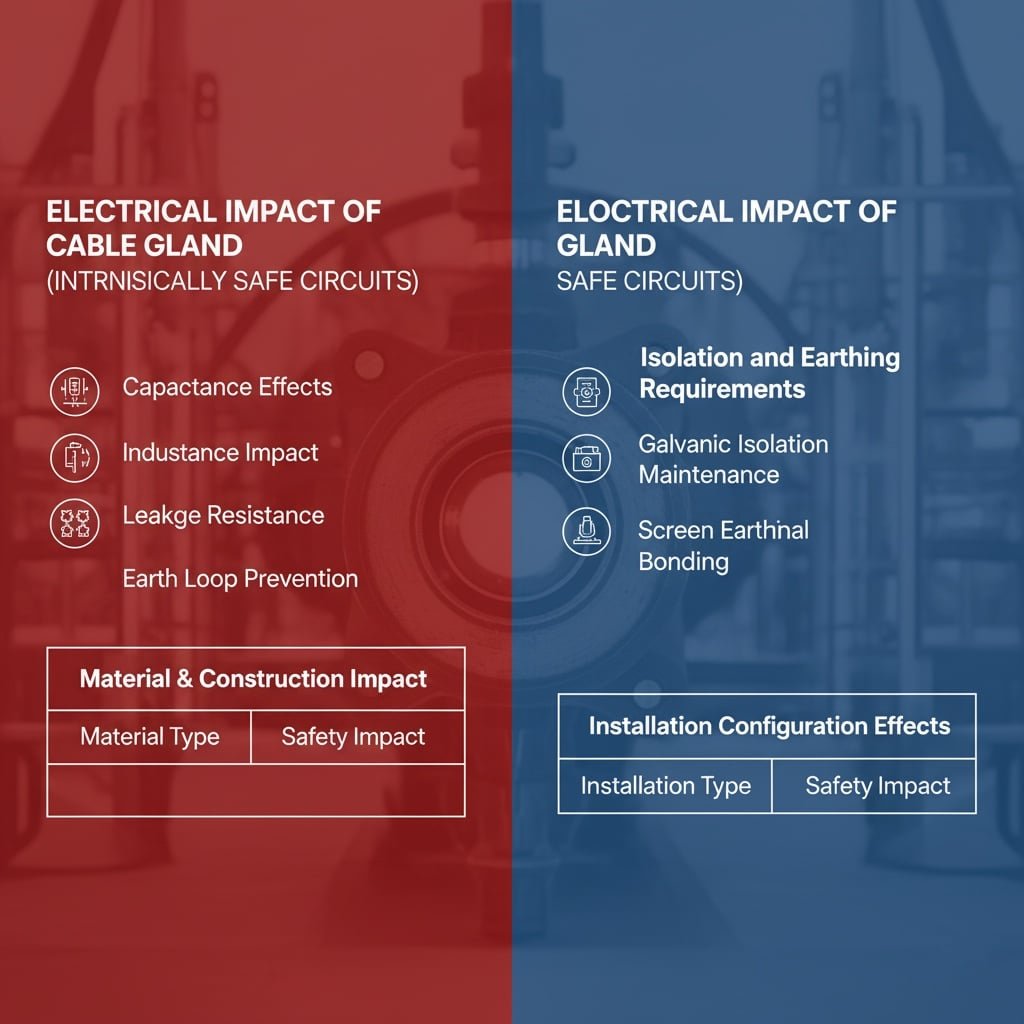
Isolation and Earthing Requirements
Galvanic Isolation Maintenance: IS cable glands must maintain proper isolation between hazardous area circuits and earthed equipment enclosures while providing necessary mechanical support and environmental sealing.
Screen Earthing: Cable screen earthing through IS cable glands requires specific techniques to maintain IS integrity while providing electromagnetic compatibility and safety earthing functions.
Legătura echipotențială: Proper bonding of metallic components through IS cable glands ensures electrical safety while maintaining IS circuit isolation requirements.
Fault Current Paths: IS cable glands must provide controlled fault current paths that don’t compromise safety barrier operation or create additional ignition sources under fault conditions.
Material and Construction Impact
Materiale conductoare: Metallic cable glands require careful consideration of earthing arrangements and isolation requirements to prevent compromising IS circuit integrity through unintended conductive paths.
Insulating Materials: Non-metallic cable glands may provide better IS isolation but must meet mechanical strength, environmental resistance, and flame propagation requirements for hazardous area applications.
Modele hibride: Some IS cable glands combine metallic strength with insulating barriers to provide optimal mechanical and electrical performance for demanding applications.
Surface Resistance: Cable gland surface treatments and coatings affect electrical parameters and must be considered in IS system design and safety calculations.
Installation Configuration Effects
| Tip de instalare | IS Considerations | Cable Gland Requirements | Impactul asupra siguranței |
|---|---|---|---|
| Direct Mounting | Earth isolation critical | Insulated or isolated design | Înaltă |
| Barrier Mounting | Maintains safe/hazardous separation | Standard with proper earthing | Mediu |
| Cutie de joncțiune | Multiple circuit isolation | Individual circuit separation | Înaltă |
| Conduit System | Continuous earthing path | Bonding and isolation balance | Mediu |
Mounting Methods: Different cable gland mounting methods affect IS circuit parameters and earthing arrangements, requiring careful consideration of electrical continuity and isolation requirements.
Rutare cablu: IS cable routing through cable glands affects circuit parameters and must consider separation distances, electromagnetic compatibility, and safety barrier integrity.
What Certifications and Standards Apply to IS Cable Glands?
IS cable gland certifications include IECEx, ATEX, FM, CSA, and other national approvals that verify compliance with intrinsic safety standards including IEC 60079, EN 60079, and regional regulations for specific Clasificarea zonelor periculoase3 and gas group classifications.
Proper certifications are mandatory because non-certified components can void entire IS system approvals and create legal liability in case of incidents.
International Certification Bodies
Certificare IECEx: International Electrotechnical Commission Explosive Atmospheres certification scheme providing global recognition for IS cable glands with mutual recognition between participating countries.
Directiva ATEX: European Union explosive atmosphere directive requiring CE marking and notified body certification for IS cable glands used in European installations or exported to EU markets.
Aprobări FM: Factory Mutual certification for North American markets, providing approval for IS cable glands used in Class I, Division 1 and Division 2 hazardous locations.
Certificare CSA: Canadian Standards Association certification for Canadian markets, often required alongside FM approval for complete North American market access.
Regional and National Standards
Seria IEC 60079: International standards for explosive atmosphere equipment including IS cable glands, covering construction, testing, and application requirements for global markets.
EN 60079 Series: European harmonized standards based on IEC 60079 with additional European requirements, mandatory for ATEX compliance and CE marking of IS cable glands.
NFPA 70/NEC: National Electrical Code requirements for IS installations in the United States, affecting cable gland selection and installation practices for American projects.
API Standards: American Petroleum Institute standards for oil and gas industry applications, providing additional requirements for IS cable glands in upstream petroleum facilities.
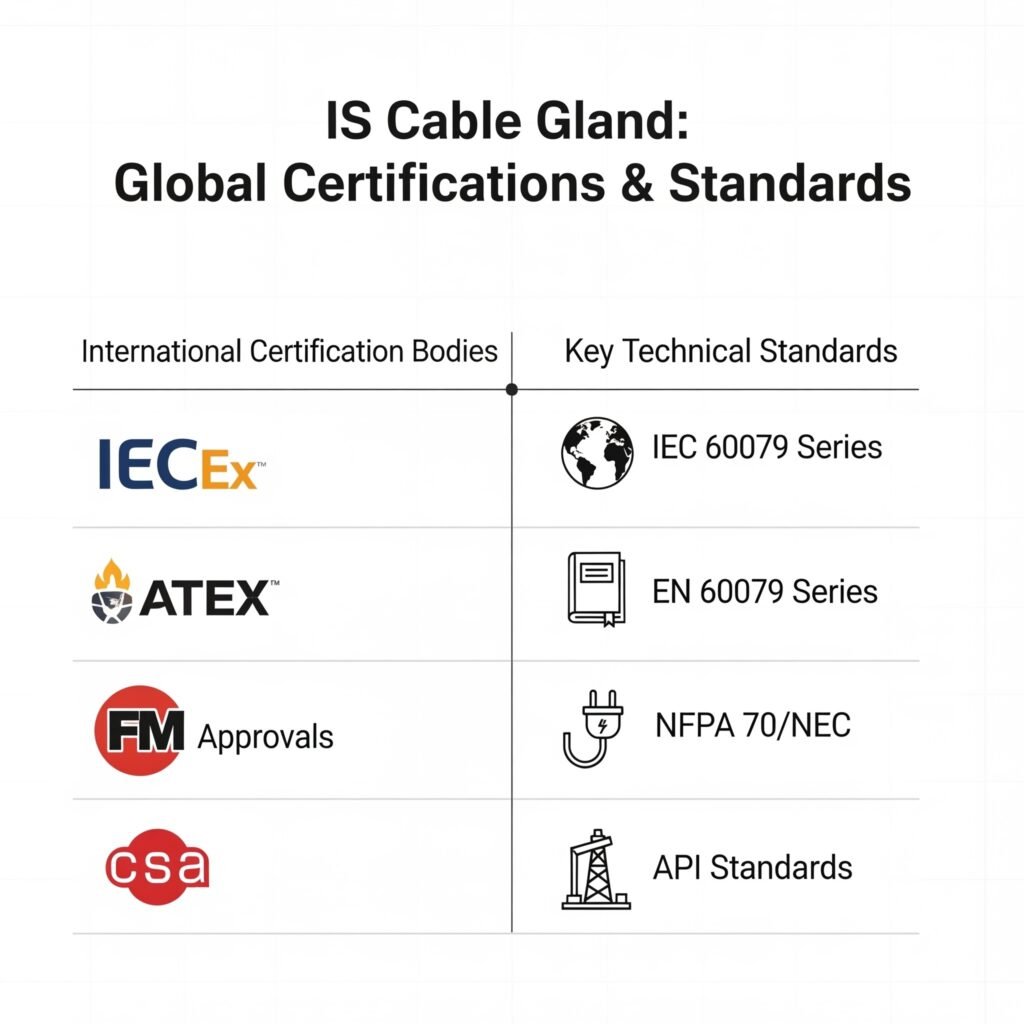
Certification Parameters and Markings
Entity Parameters: IS cable glands certified as “Entity” equipment include electrical parameters (Co, Lo, Ro) that must be included in system safety calculations and barrier selection.
Simple Apparatus: Some cable glands qualify as “Simple Apparatus4” with inherently safe electrical parameters that don’t require inclusion in safety barrier calculations.
Temperature Codes: Certification markings include temperature class (T1-T6) indicating maximum surface temperature under normal and fault conditions for specific installation environments.
Gas Group Ratings: Certification includes gas group classification (IIA, IIB, IIC) indicating suitability for different explosive gas environments with varying ignition energy requirements.
Documentație și trasabilitate
Certificat de conformitate: Proper documentation proving IS cable gland compliance with applicable standards and certifications, required for regulatory approval and insurance coverage.
Instrucțiuni de instalare: Certified installation procedures ensuring proper IS cable gland installation that maintains certification validity and system safety integrity.
Parameter Declarations: Electrical parameter documentation required for IS system calculations and safety barrier selection, including capacitance, inductance, and resistance values.
Cerințe de întreținere: Certification-mandated maintenance procedures and inspection intervals to ensure continued compliance and safety performance throughout service life.
Marcus, who manages instrumentation for a large chemical processing facility in Rotterdam, Netherlands, learned about certification complexity during a plant modernization project. His team needed IS cable glands for new analyzer installations but discovered that their existing supplier’s products only had ATEX certification, while their safety barriers required IECEx Certification5 entity parameters for the system calculations. The mismatch would have required expensive safety barrier changes or system redesign. We provided IS cable glands with both ATEX and IECEx certifications including proper entity parameter documentation, enabling seamless integration with their existing safety systems while meeting all European regulatory requirements.
How Do You Select IS Cable Glands for Different Applications?
IS cable gland selection requires analyzing circuit parameters, hazardous area classification, environmental conditions, and safety barrier requirements to choose appropriate certifications, electrical parameters, materials, and construction features that maintain intrinsic safety integrity for specific applications.
Different IS applications have unique requirements that affect cable gland selection and system integration considerations.
Process Instrumentation Applications
Pressure Transmitters: IS pressure transmitters require cable glands with low capacitance and proper screen earthing to maintain signal integrity while preserving safety barrier performance in Zone 1 applications.
Temperature Sensors: RTD and thermocouple circuits need IS cable glands with minimal thermal effects and proper isolation to prevent measurement errors while maintaining IS circuit integrity.
Flow Meters: Electromagnetic and ultrasonic flow meters require IS cable glands with EMC compatibility and proper earthing arrangements to prevent interference while maintaining safety barriers.
Analytical Instruments: Gas chromatographs and analyzers need IS cable glands with ultra-low leakage and contamination resistance for accurate measurements in hazardous environments.
Control System Integration
DCS Integration: Distributed control systems require IS cable glands compatible with specific safety barrier types and communication protocols while maintaining system-wide IS integrity.
PLC Systems: Programmable logic controllers with IS I/O modules need cable glands that support digital communication while providing proper isolation and electromagnetic compatibility.
Safety Instrumented Systems: SIL-rated safety systems require IS cable glands with appropriate reliability ratings and failure mode characteristics that support overall system safety integrity levels.
Wireless Systems: IS wireless transmitters need cable glands that accommodate antenna connections while maintaining RF performance and intrinsic safety requirements.
Environmental and Installation Considerations
Platforme offshore: Marine environments require IS cable glands with superior corrosion resistance, typically stainless steel construction with appropriate certifications for salt spray and extreme weather conditions.
Prelucrarea chimică: Aggressive chemical environments need IS cable glands with specialized materials and coatings that resist specific chemicals while maintaining electrical parameters and certifications.
High Temperature Applications: Refineries and petrochemical plants may require IS cable glands with enhanced temperature ratings and thermal stability for hot process equipment installations.
Vibration Environments: Compressor stations and rotating equipment require IS cable glands with enhanced mechanical strength and vibration resistance to prevent loosening or failure.
Cable Type Compatibility
| Tip cablu | IS Considerations | Cerințe pentru glande | Aplicații tipice |
|---|---|---|---|
| Instrumentație | Low capacitance critical | Entity parameters specified | Transmitters, analyzers |
| Termocuplu | Minimal thermal effects | Low thermal mass design | Temperature measurement |
| Fibră optică | Isolation maintenance | Non-conductive construction | High-speed data |
| Armored | Continuitatea Pământului | Terminarea corectă a armăturii | Mediile dure |
Multi-Core Cables: IS applications with multiple circuits require cable glands that provide proper separation and isolation between different IS circuits within the same cable entry.
Hybrid Cables: Power and signal combinations in IS applications need specialized cable glands that maintain proper isolation while accommodating different conductor types and insulation requirements.
What Are the Installation and Maintenance Requirements?
IS cable gland installation and maintenance require strict adherence to certification requirements, proper earthing procedures, regular inspection schedules, and documentation practices to ensure continued compliance with intrinsic safety standards and regulatory requirements.
Proper installation and maintenance are critical because improper procedures can compromise IS integrity and create safety hazards.
Cele mai bune practici de instalare
Certification Compliance: All installation procedures must follow certified installation instructions to maintain IS cable gland approvals and system safety integrity throughout the installation process.
Earthing Procedures: Proper earthing arrangements according to IS standards and local electrical codes, ensuring safety without compromising IS circuit isolation requirements.
Specificații de cuplu: Precise torque application according to manufacturer specifications to ensure proper sealing and electrical contact without damaging IS cable gland components or certifications.
Etanșare de mediu: Proper sealing techniques to maintain IP ratings and prevent moisture or contaminant ingress that could affect IS circuit parameters or safety performance.
Inspection and Testing Requirements
Inspecții vizuale: Regular visual inspection schedules to identify physical damage, corrosion, or deterioration that could affect IS cable gland performance or safety integrity.
Testare electrică: Periodic electrical parameter verification including insulation resistance, continuity, and earth bond testing to ensure continued compliance with IS requirements.
Certification Verification: Regular review of certification documentation and compliance status to ensure continued validity and regulatory compliance throughout service life.
Monitorizarea mediului: Assessment of environmental conditions that could affect IS cable gland performance, including temperature, humidity, chemical exposure, and mechanical stress.
Documentația și păstrarea înregistrărilor
Înregistrări de instalare: Detailed documentation of IS cable gland installation including certification numbers, installation procedures, test results, and compliance verification for regulatory and insurance requirements.
Jurnale de întreținere: Comprehensive maintenance records including inspection results, test data, repairs, and replacements to demonstrate continued compliance and support reliability analysis.
Managementul schimbării: Proper documentation and approval procedures for any changes to IS cable gland installations that could affect safety integrity or certification compliance.
Proceduri de urgență: Clear procedures for responding to IS cable gland failures or damage that could compromise safety systems or create hazardous conditions.
Concluzie
Selecting cable glands for intrinsic safety systems requires deep understanding of IS principles, certification requirements, and application-specific considerations. Success depends on choosing properly certified components with appropriate electrical parameters while implementing correct installation and maintenance procedures that preserve safety integrity throughout system life.
The stakes in IS applications are literally life and death, making proper cable gland selection and implementation critical for personnel safety and regulatory compliance. At Bepto, we understand the critical importance of intrinsic safety and provide certified IS cable glands with proper documentation and technical support to ensure safe and compliant installations. Our team works closely with safety engineers to ensure proper selection and implementation of IS cable glands that maintain safety integrity while meeting operational requirements.
FAQs About Intrinsic Safety Cable Glands
Q: What’s the difference between IS cable glands and explosion-proof cable glands?
A: IS cable glands maintain intrinsic safety by limiting energy and providing isolation, while explosion-proof cable glands contain explosions within enclosures. IS systems prevent ignition through energy limitation, whereas explosion-proof systems contain ignition effects through robust construction.
Q: Do I need special certifications for IS cable glands?
A: Yes, IS cable glands require specific certifications like IECEx, ATEX, FM, or CSA depending on your location and application. These certifications verify compliance with intrinsic safety standards and include electrical parameters needed for safety barrier calculations.
Q: How do I calculate cable gland parameters for IS systems?
A: Include cable gland capacitance, inductance, and resistance values in your safety barrier calculations along with cable and field device parameters. The total circuit parameters must remain within safe limits specified by your safety barriers and hazardous area classification.
Q: Can I use metallic cable glands in IS applications?
A: Yes, but metallic IS cable glands require proper earthing arrangements and isolation considerations to maintain IS circuit integrity. Some applications may require insulated mounting or specific earthing techniques to prevent compromising safety barriers.
Q: How often should IS cable glands be inspected?
A: Inspection frequency depends on environmental conditions and regulatory requirements, typically ranging from monthly in harsh environments to annually in controlled conditions. Follow manufacturer recommendations and local regulations for specific inspection schedules and procedures.
-
Learn the fundamental principles of intrinsic safety and how it prevents explosions. ↩
-
Explore a technical guide on galvanic isolation and its role in protecting safety circuits. ↩
-
See a detailed guide explaining the Zone and Division systems for classifying hazardous locations. ↩
-
Understand the definition of “Simple Apparatus” and why these devices don’t require certification. ↩
-
Read an overview of the IECEx international certification system from an official source. ↩

